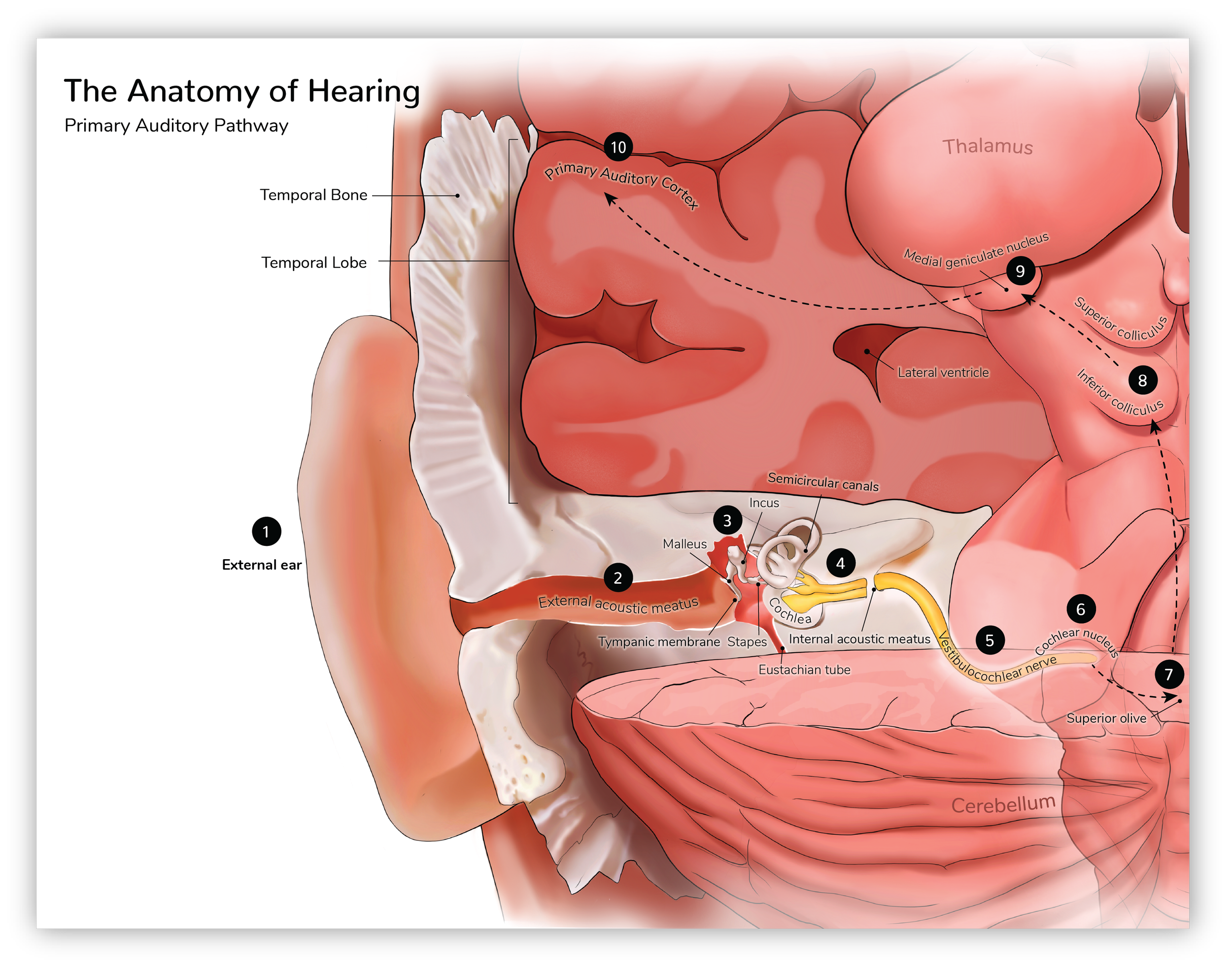
NEUROANATOMY ILLUSTRATION
The Anatomy of Hearing: the Primary Auditory Pathway
…………….
STORY
…………….
The purpose of this project was to design and create an illustration that addresses a gap in neuroanatomy education that is not easily remedied by existing illustrative work.
Audience: Medical students, neuroanatomy students
Software: Photoshop, Procreate, ZBrush
Format: Educational Illustration
Client: Dr. Shelley Wall, University of Toronto
Key Skills: visual storytelling, neuroanatomy research, veterinary science research, thumbnailing, digital painting, collaboration with neuroanatomy experts
DETAILS
…………….
PRE-PRODUCTION
…………….
RESEARCH & MEDIA AUDIT
I began the research phase by brainstorming potential neuroanatomy questions on a Miro dashboard. The topic of hearing intrigued me as I had very little knowledge about the inner workings of the process of hearing. Above is a summary of the research points I noted after delving into the existing literature.
A major part of this research endeavor was the creation of a media audit, where I searched for existing visual media describing the process of hearing. Above is a collection some of this media. This audit helped me to pinpoint a gap in neuroanatomy education: that this important neurological pathway was not illustrated from start to finish.
I decided to create a maquette to guide my illustration. In order to do this, I compiled assets from BodyParts3D, a database of human anatomical 3D models. I also used Professor Nicholas Woolridge’s brain model, based off an MRI scan of his brain, and a model of internal ear structures by W. Robert J. Funnell. I then performed Booleans on the structures to reveal structures using ZBrush.
Following the maquette creation, I gathered references imagery of relevant brain, brainstem and ear anatomy to guide my rendering. I also collected award-winning neuroanatomy illustrations from the American Association of Medical Illustrators (AMI) website to serve as inspiration for my rendering style and color choices.
…………….
MAQUETTE CREATION & REFERENCE IMAGERY
PRODUCTION
…………….
I rendered the illustration using Procreate and Photoshop, first starting with linework, proceeding with flat colours, then rendering out forms, and colour correcting. Corrections to the brain anatomy were made after the drafted flat colour render upon consultation with a neuroanatomist. The final illustration, which can be viewed below, was labeled in Adobe Illustrator.





